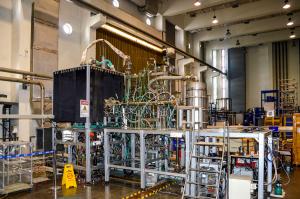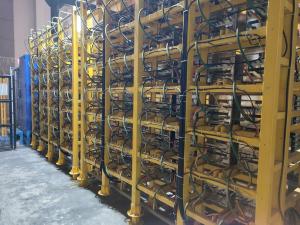India successfully demonstrates ITER power and pulse requirements
As a part of its in-kind commitments to the project, ITER India will deliver two radio-frequency-based power sources (or "gyrotrons") with state-of-the-art specifications (170 GHz, 1MW, up to 3600 s), as wells as four main high voltage power supplies (6MW, 55kV each) for electron cyclotron resonance heating. The deliverables also include the associated auxiliaries and a demonstration of complete system performance at the ITER site. One of the challenges of these complex high-power radio frequency systems is to establish integrated performance that is safe, reliable and easily repeatable despite working in a harsh electromagnetic environment.
Extensive testing and validation of all interfaces was performed before the integrated testing. The main high-voltage power supply was validated for performance specifications including the Joule limit (wire burn test) to ensure the safety of the gyrotron during arcing.



